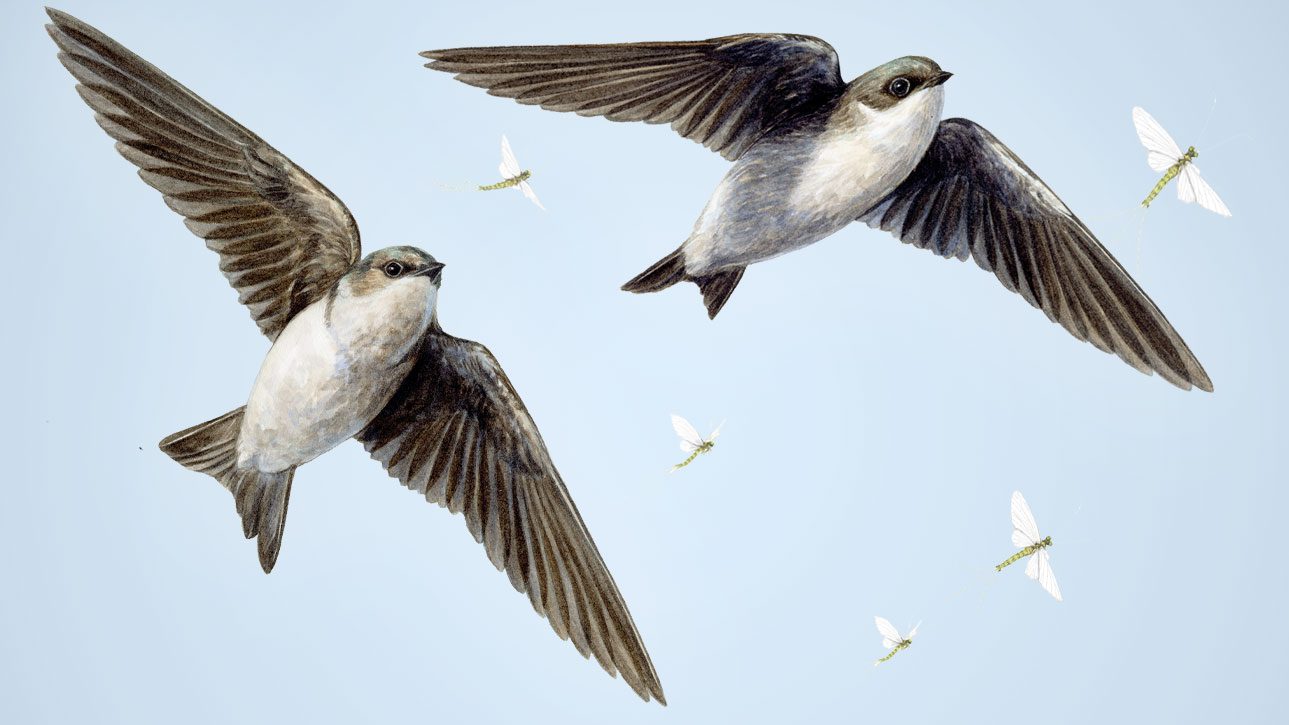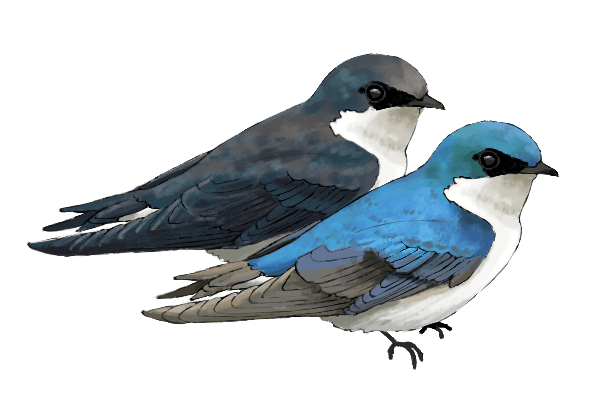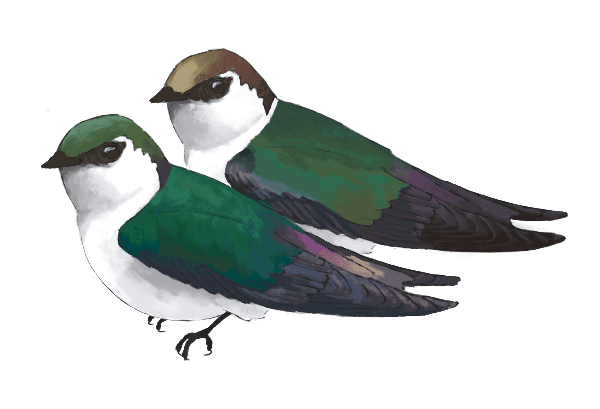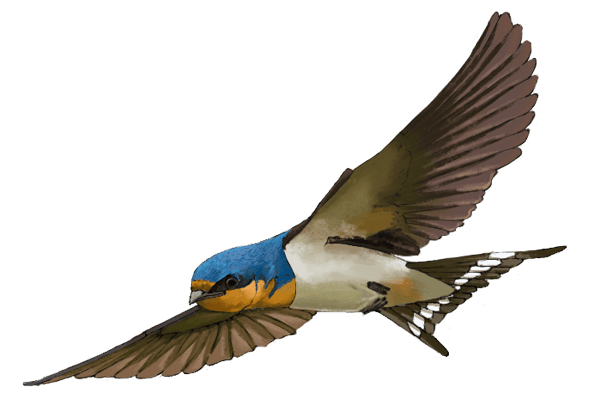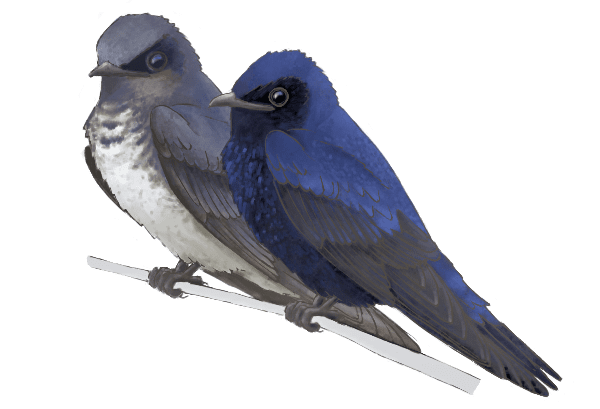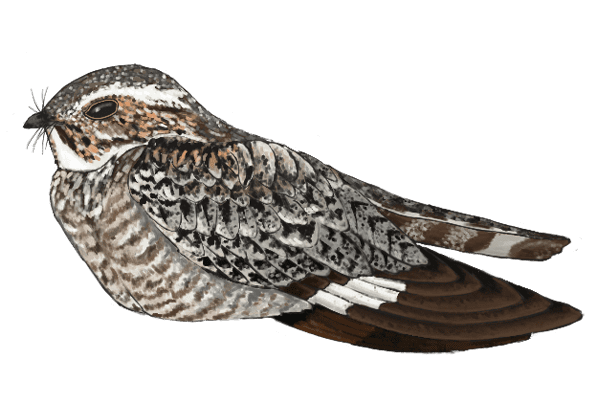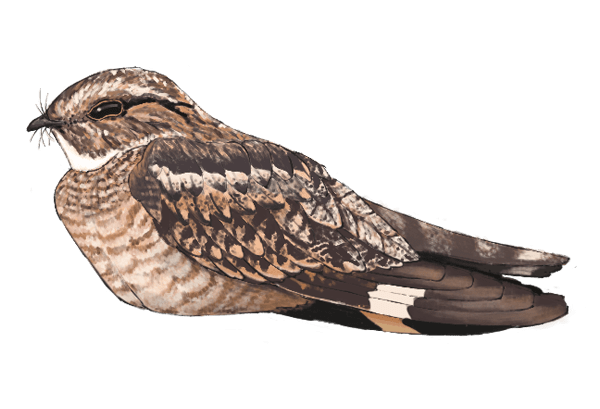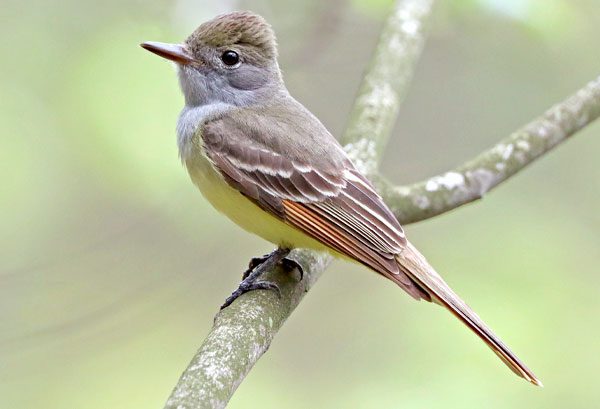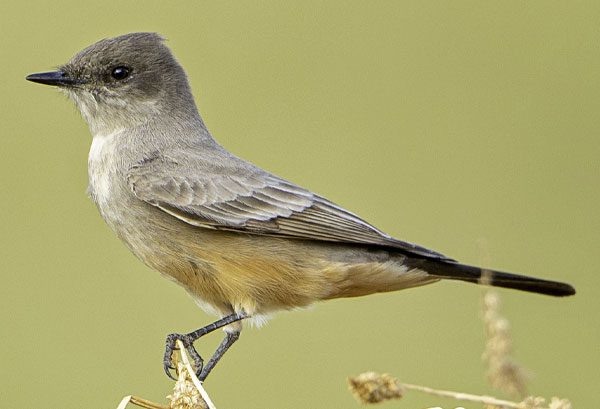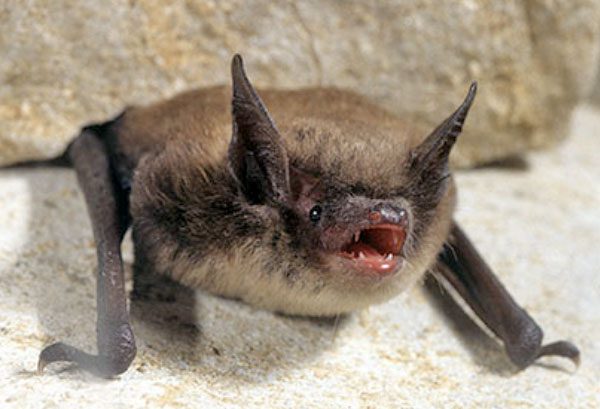Birds that swoop or dart to catch bugs in flight are called aerial insectivores—and they need your help.
May 1, 2024
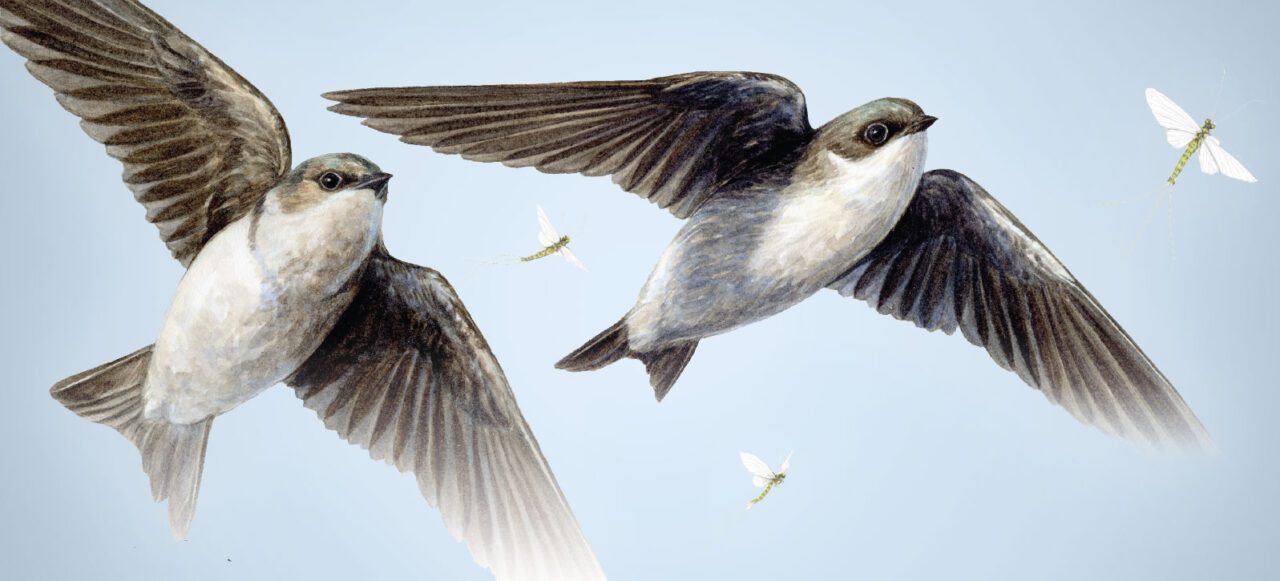
This article is adapted from a PDF brochure created by NestWatch. Download the original PDF to print out your own copy or share with others.
Graceful. Colorful. Helpful. You may have seen them in flight, swooping up, down, and all around, on the hunt for their insect prey. Then again, maybe not. Some are nocturnal. Camouflaged. Elusive.
But they all have one thing in common: birds that gulp down insects while flying—whether it’s dawn, dusk, day, or night—are known as aerial insectivores. In North America, this group includes species in the swallow and martin, swift, nightjar, and flycatcher families.
Unfortunately, many aerial insectivore populations have been steeply declining since the 1980s—as have insect populations. So how can we help bring these agile fliers back to our yards, farms, cities, and wild spaces?
Help Insects by Providing Healthy Habitat
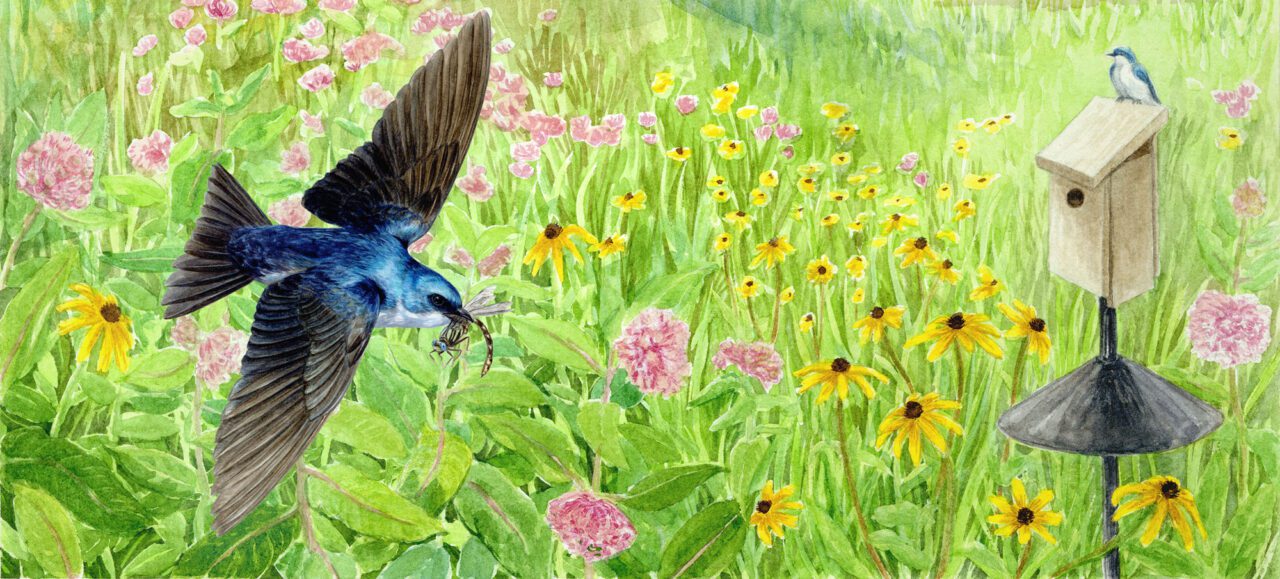

Aerial insectivores eat flying insects as their primary food source year-round. If you have a yard, patio, or outdoor space that you manage, chances are you’re sharing your habitat with both insects and aerial insectivores. The choices you make matter for them. Try these suggestions to improve habitat for nature’s bug-zappers.
Let Grasses Grow Longer
Grasses and wildflowers can provide excellent habitat for insects—especially if allowed to grow longer and wilder than a typical lawn. Meadows provide important habitat for a diversity of insects and safe cover for ground-nesting birds. If you can control the mowing schedule for where you live:
- reduce mowing as much as possible to keep insects and nesting birds safer
- leave grass at least 3 inches tall so other plants retain their flowers and support pollinators
- for large grassy areas, try to avoid mowing during the nesting season for your region (USDA Farm Service Agency)
- try to reduce the overall area of grass in your lawn
- leave buffer strips or areas with longer grass along lawn edges
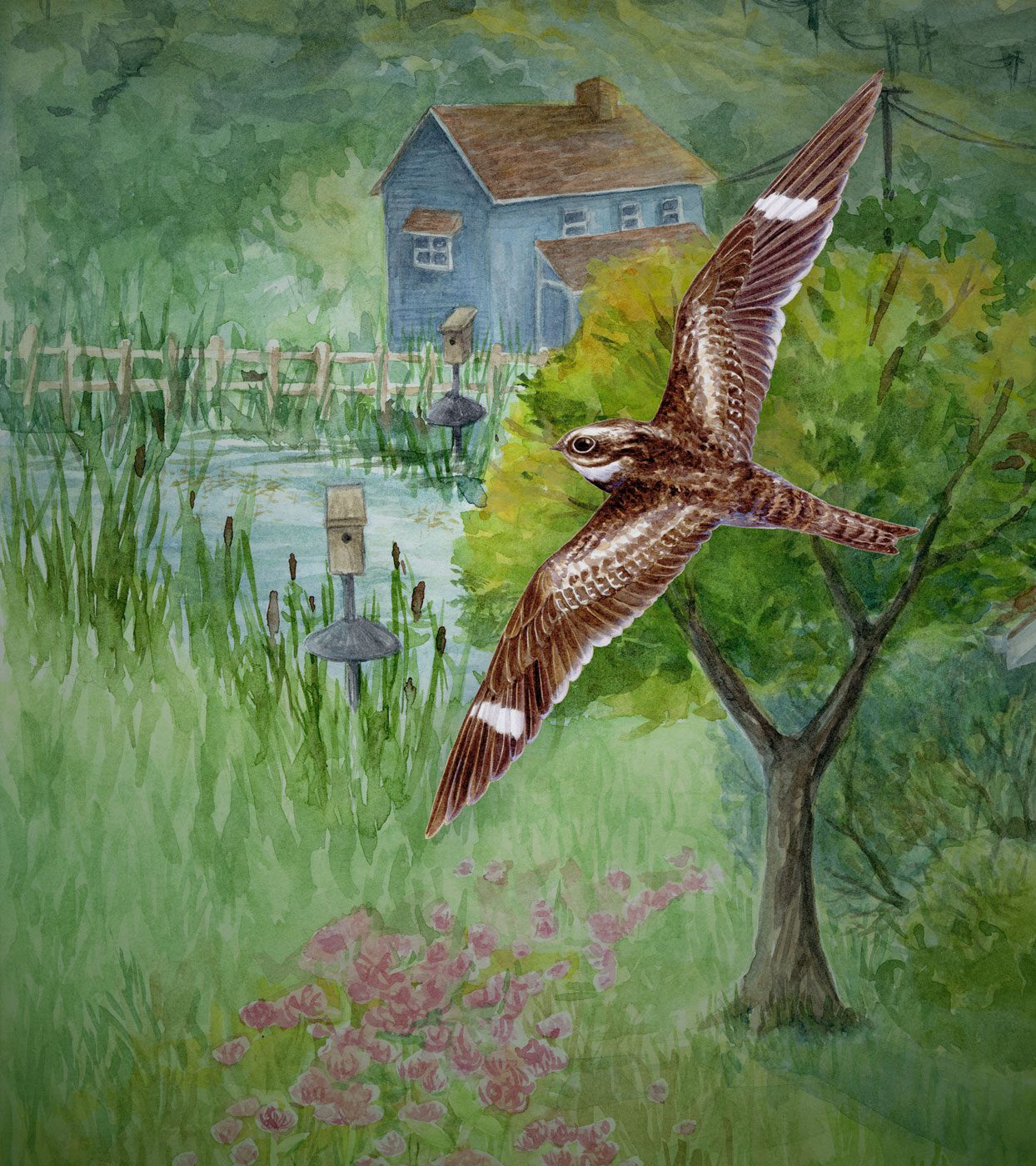

Focus On Water Resources
Insects tend to congregate over bodies of water. These irreplaceable “nutrient hotspots” need protection from disturbances like urbanization, agricultural pesticides, and fertilizers. If you have a backyard or farm pond, don’t mow right up to the edge; leave a vegetation buffer around it to provide places for insects to feed, rest, and lay eggs. This will also attract aerial insectivores that may nest nearby.
Cater to Their Needs With Native Plants
Native plants are those that have been growing in your region for thousands of years. Evidence shows that native plants support more insects than non-native or exotic species. Plant-finder tools from Pollinator Partnership and Lady Bird Johnson Wildflower Center will help you determine which plants are native to your region and which can increase your property’s value to birds, insects, and other wildlife.
Save Insects—Avoid Pesticides
Applying broad-spectrum pesticides can harm birds that eat insects, killing many kinds beyond the target species. With fewer insects buzzing through the air, there’s less food to support healthy aerial insectivore populations.
- encourage insects in your spheres of influence: turn off the bug zapper and put down the insecticide sprayer
- control garden pests by applying soapy water directly to affected plants
- use protective clothing and bug spray to keep insects from bothering you, while letting them fly elsewhere
Be Climate Smart
Heat and drought can impair hatching and fledging success of nesting birds. Research shows that aquatic and terrestrial insects are emerging earlier as early spring temperatures get warmer. Some bird species are trying to keep up by nesting earlier, but constraints on the other parts of their life cycle (e.g., migration, replenishing energy reserves) limit just how well they can match the changing pace of insect activity. Using clean energy, lowering your carbon footprint, and supporting policies that help reduce greenhouse gas emissions may delay climate warming.
Give Birds Places to Nest
Helping insects thrive is largely a matter of reducing pesticides and providing vegetation—but birds need dedicated nest sites. Aerial insectivores nest in remarkably diverse locations—in tree hollows and nest boxes, on homes and buildings, on the ground, high on gravel rooftops, in sandy burrows, under bridges and eaves, and in chimneys, for instance. Though these sites can sometimes be inconvenient, tolerating or encouraging them can be a big factor in helping populations recover.
Make Room for Nesting Activities
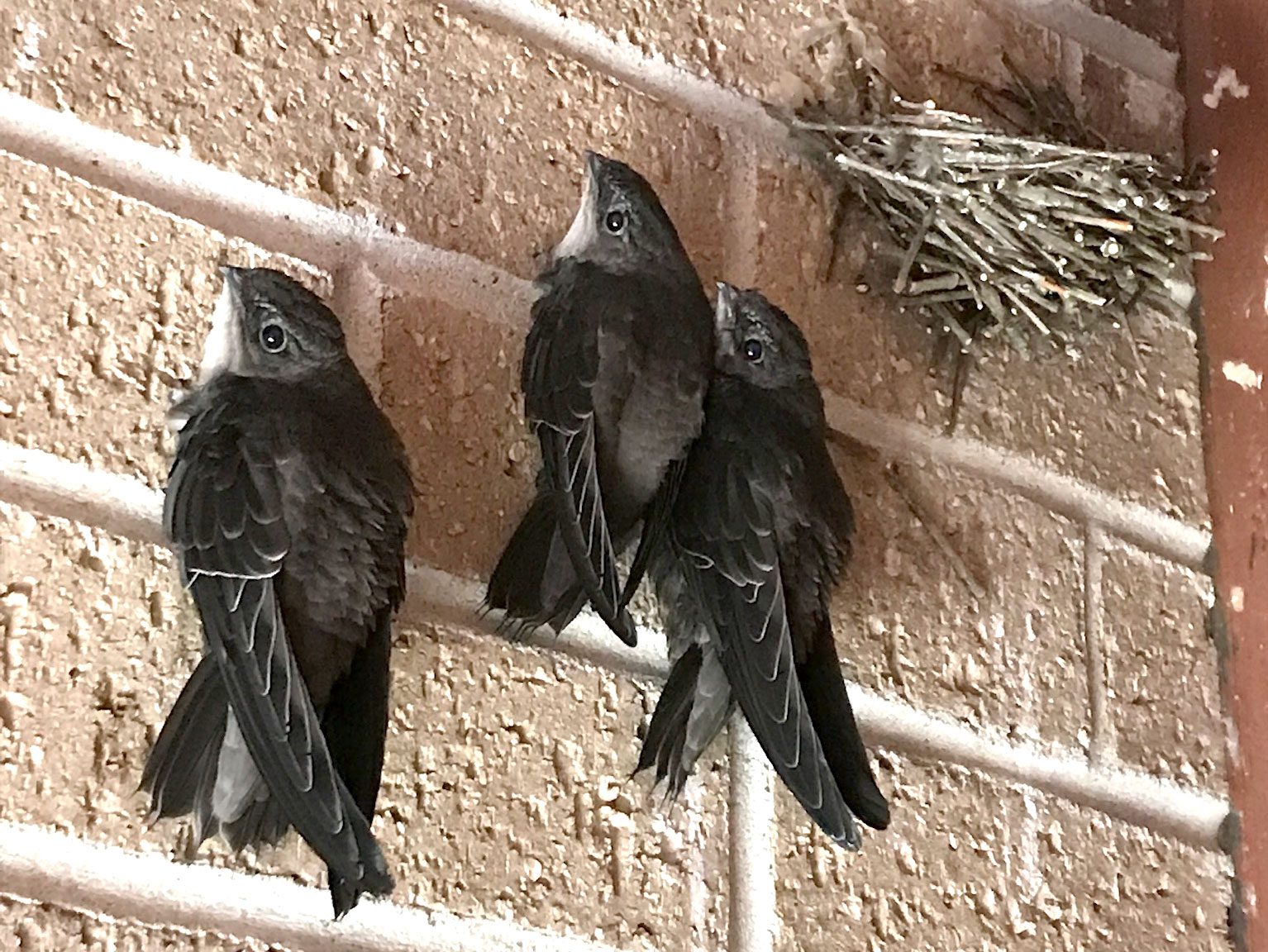

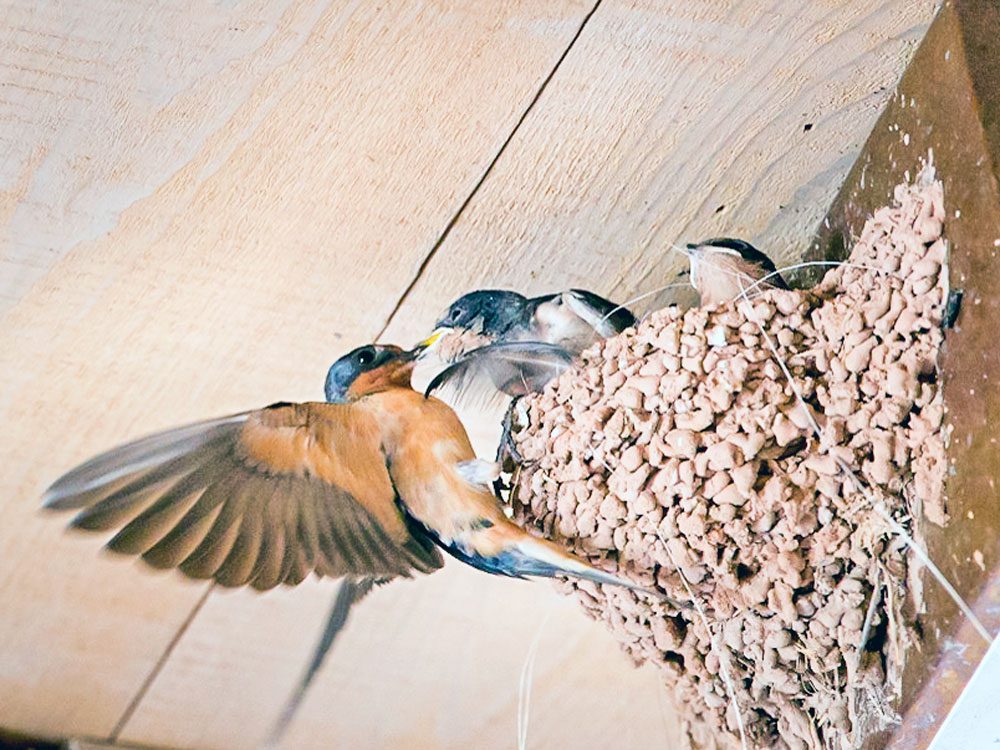

Offer Them Nest Boxes and Other Nest Sites
For some aerial insectivores, making room for their nesting activities for a few weeks each year may be enough. But for other species, you may need to create new nest sites.
- For Tree Swallows and Violet-green Swallows: provide nest boxes in open areas like yards and fields
- For Barn Swallows: place a nesting shelf just underneath the eaves of a home, garage, or other building
- For Purple Martins: these large swallows rely on actively managed “martin houses” provided by dedicated, passionate people known as Purple Martin landlords
- For Common Nighthawks: a flat gravel rooftop is a satisfactory place to nest, while smooth-surfaced rooftops are unsuitable. Maintaining stone rooftops with pea gravel can support more urban Common Nighthawks, and females will return to these sites year after year
- Make nest boxes safer by using free-standing poles and attaching predator guards
- Leave dead trees standing when possible, as these make desirable natural nest sites.
- Download nest box plans for swallows, martins, and many other species via NestWatch’s Right Bird, Right House tool.
Tips for Attracting 9 Kinds of Aerial Insectivores
-
Tree Swallow
Tachycineta bicolor
Habitat: grassland, lake, marsh, shore
Breeding Range: northern North America
Diet: dragonflies, damselflies, flies, mayflies, caddisflies, true bugs, bees, ants, wasps, beetles, butterflies, moths, spiders.
Nesting period: mid-May to July
-
Violet-green Swallow
Tachycineta thalassina
Habitat: grassland, lake, marsh, shore, mountain, open woodland
Breeding Range: western North America
Diet: flies, leafhoppers, leafbugs, aphids, flying ants.
Nesting period: mid-May to August
-
Barn Swallow
Hirundo rustica
Habitat: grassland, lake, shore, town
Breeding Range: near-global distribution
Diet: mainly flies, also beetles, bees, wasps, ants, butterflies, moths
Nesting period: early May to August
-
Purple Martin
Progne subis
Habitat: desert, town, lake
Breeding Range: North America
Diet: beetles, flies, dragonflies, leafhoppers, grasshoppers, crickets, butterflies, moths, wasps, bees, caddisflies, spiders, cicadas, termites, mayflies.
Nesting period: early April to August
-
Common Nighthawk
Chordeiles minor
Habitat: grassland, forest, open woodland, town, lake, shore
Breeding Range: North America, parts of Central America
Diet: queen ants, wasps, beetles, caddisflies, moths, mosquitoes, bugs, mayflies, flies, crickets, grasshoppers
Nesting period: late May to August
May nest on the ground or gravel rooftops
-
Lesser Nighthawk
Chordeiles acutipennis
Habitat: desert, grassland, open woodland, town, lake, shore
Breeding Range: southwestern North America, parts of Central and South America
Diet: flies, mosquitoes, moths, June bugs, leafhoppers
Nesting period: mid-April to August
May nest on the ground or gravel rooftops
-
Great Crested Flycatcher
Myiarchus crinitus
Habitat: woodlands, particularly with deciduous trees
Breeding Range: eastern North America
Diet: insects and other invertebrates, small berries, and other fruits
Nesting period: May through July
-
Say’s Phoebe
Sayornis saya
Habitat: open country, sagebrush, badlands, dry barren foothills, canyons, and borders of deserts
Breeding Range: western North America
Diet: insects such as beetles, grasshoppers, crickets, flies, and bees
Nesting period: Mid-April to August
-
Little brown bat
Myotis lucifugus
Habitat: Open or wooded areas near water; maternity colonies are in attics, bat houses, other human structures, and sometimes hollow trees
Breeding Range: North America
Diet: mosquitoes, midges, caddisflies, moths, hoppers, small beetles, and spiders
Maternity season: pups are born May to June and nurse for 2+ months
Illustrations by Holly Grant. Great Crested Flycatcher by Daniel Jauvin / Macaulay Library, Say’s Phoebe by Neil Rucker / Macaulay Library, little brown bat by John MacGregor / USFWS.

